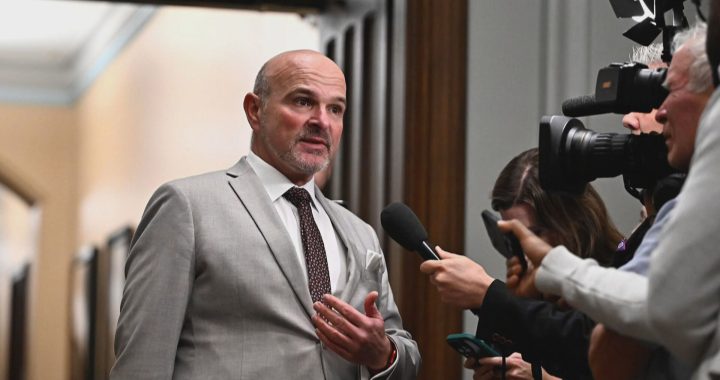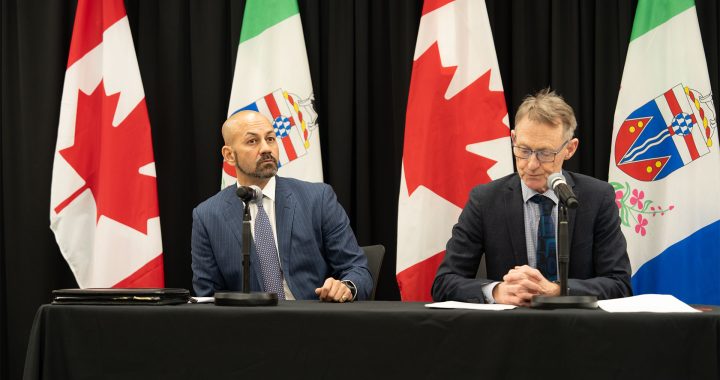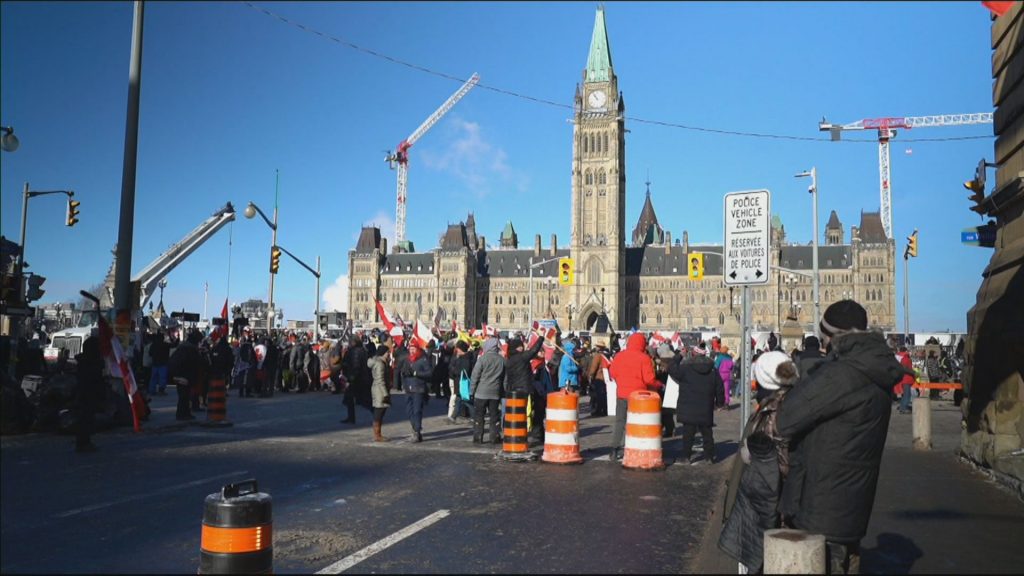
At various times, between hundreds and thousands of people have protested in Ottawa saying they won't leave until all pandemic restrictions are scrapped. Photo: APTN
Canada’s military spies, who have scrutinized Indigenous-led protests for years, say they aren’t worried about the nearly two-week-old blockade of Parliament Hill and surrounding neighbourhoods by activists opposing vaccine mandates and other pandemic restrictions.
Protesters with the trucker-led convoy occupying downtown Ottawa had, at one point, built a makeshift shack to use as a staging area where they were stockpiling jerry cans of fuel and propane tanks in Confederation Park.
The camp, now moved, was directly across the Rideau Canal from Department of National Defence (DND) headquarters, where senior officials and the military’s national security counter-intelligence unit are based, though the unit says it wasn’t concerned.
“The Canadian Forces National Counter-Intelligence Unit (CFNCIU) can confirm that they are not monitoring the ongoing trucker convoy protest in Ottawa, nor are they conducting any related investigation as there is no security threat to DND/CAF involved,” a department spokesperson told APTN News. “As there is no CFNCIU nexus to this issue, it would be inappropriate to comment further.”
The secretive spy agency is tasked with identifying security threats to its own members, assets and infrastructure posed by terrorism, subversion, espionage, extremism or subversive activities aimed at overthrowing the government of Canada.
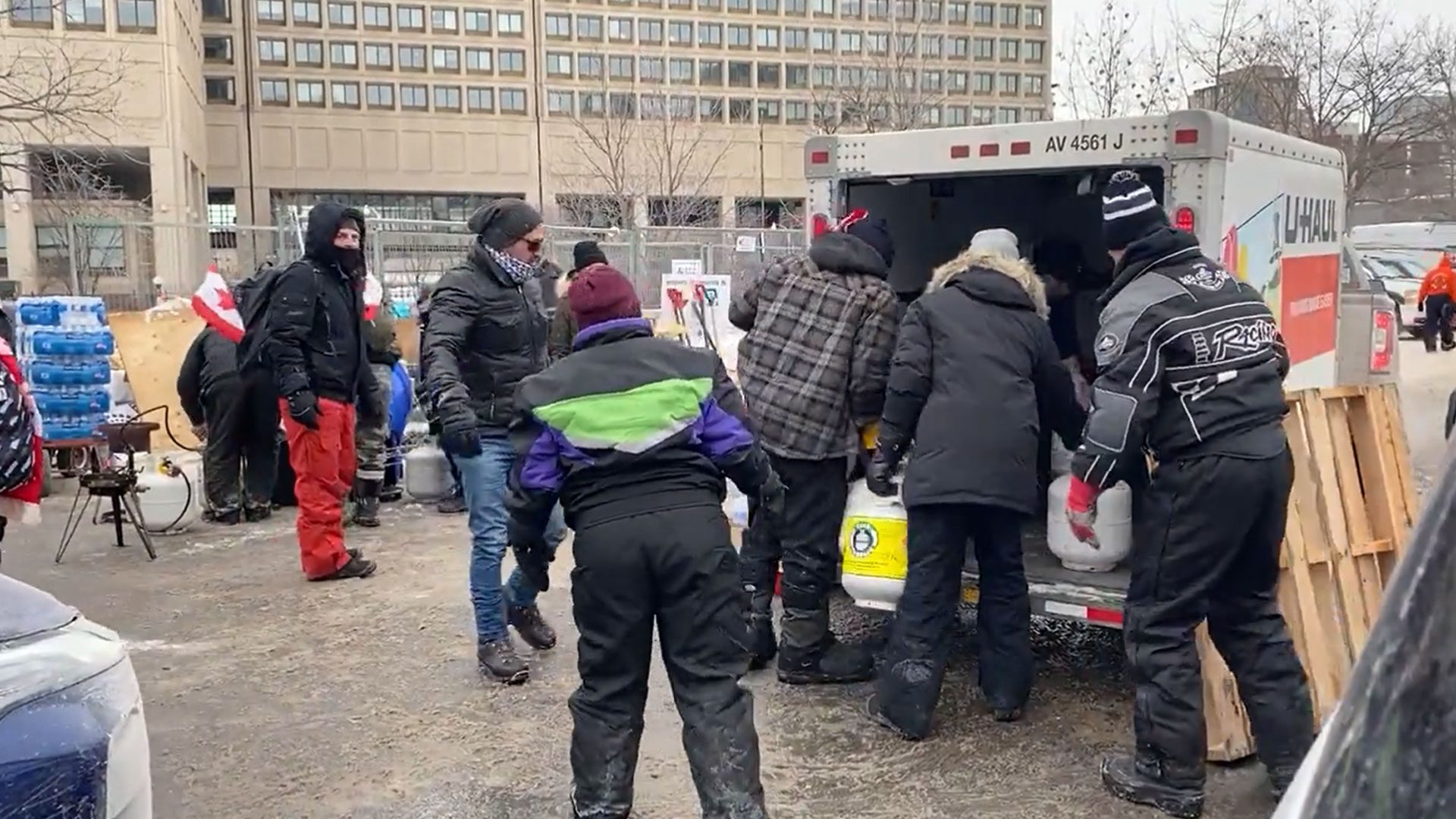
The capital occupiers have paralyzed traffic, shuttered businesses and turned streets into tailgate parties and improvised campsites. Ottawa police say 60 criminal probes are underway of which 11 involve alleged hate crimes.
City officials have called the protest a “siege” and coup effort. In a Feb. 7 letter to federal and provincial governments, Ottawa Mayor Jim Watson called it “an aggressive and hateful occupation” whose round-the-clock horn honking, now banned via injunction, “is tantamount to psychologic warfare.”
Confederate flags and a Nazi swastika flag were spotted at a raucous Jan. 29 rally attended by an estimated 8,000 people. Two days earlier, the Canadian Anti-Hate Network warned, “If you look at its organizers and promoters, you’ll find Islamophobia, antisemitism, racism, and incitements to violence.”
The group has drawn up a memorandum of understanding urging the governor general and Senate to overthrow Prime Minister Justin Trudeau and replace his government with a committee that would include its own members. One of its organizers has said, referring to pandemic restrictions, “the only way this is going to be solved is with bullets” and “a massive revolution.”
But frontline activists insist their movement is peaceful, saying their frustrations are reasonable and that racists and criminals are few. Some Indigenous people support the movement, though many leaders, including from the Algonquin Nation, have denounced it.
Trudeau ruled out military intervention to quash the blockade, saying it’s a job for local law enforcement. But Watson said Ottawa police need 1,800 more regular officers, crowd control specialists and civilian staff “to quell the insurrection.”
Security agencies see some groups as relatable insiders: prof
Despite the mayor’s talk of insurrection and the group’s talk of overthrowing Trudeau, that the CFNCIU says there’s no threat comes as no shock to Carleton University criminology professor Jeffrey Monaghan.
He said military spies shouldn’t be monitoring any protests but noted this one does raise legitimate concerns which security agencies have historically underplayed.
“Policing organizations across the country, and DND is part of this characterization, have for years underemphasized and ignored the violence of neo-Nazi groups and of white supremacists,” Monaghan told APTN.
It’s an analysis the country’s civilian security watchdog seems to agree with. In its 2020 annual report, the National Security and Intelligence Review Agency (NSIRA) warned that the CFNCIU isn’t taking white supremacy in the military serious enough.
“The presence of white supremacy within the Canadian military has been well documented,” the report said, explaining that white supremacist groups “actively” recruit people with military training, or encourage people to enlist to bolster their own tactical knowledge.
As a result, NSIRA’s review concluded white supremacy “poses an active counter-intelligence threat” to the department and the military but the counter-intelligence unit’s “mandate to proactively identity this threat is limited.”
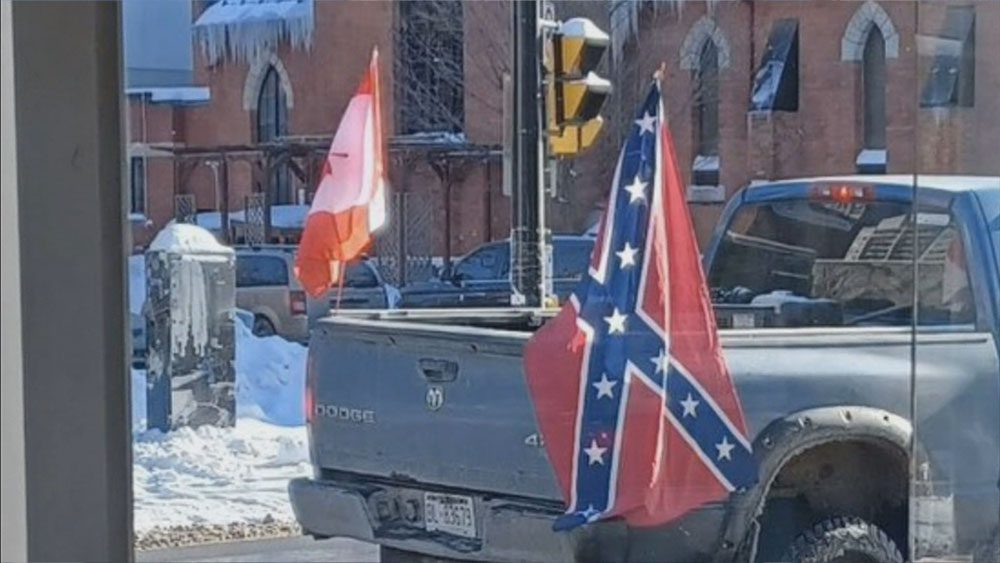
DND has gone through a small internal reckoning over this and, as a result, should be investigating whether any current or former armed forces members joined the parliamentary precinct blockade, Monaghan said.
But he disagreed the military’s lax approach to white supremacy results from a lack of mandate. Rather it comes from an internal attitude that sees these groups as relatable insiders but flags Indigenous people, among others, as inherently threatening outsiders, he said.
“There’s an institutional culture that’s very quick to label outsider groups as risky and as potentially violent or criminal,” he said. “Whereas these insider groups, who are white and share a cultural repertoire, get so much more patience, understanding and tolerance from policing agencies. I think the military is just kind of part of that.”
The CFNCIU didn’t answer directly when asked about white supremacy. A spokesperson said it has “made addressing hateful conduct and ideologically motivated violent extremism” a priority.
The unit also refused to say if it gathered intelligence for an initial threat assessment or ignored the convoy altogether.
Unit regularly kept tabs on Indigenous protests
For many years, the military’s counter-intelligence unit has periodically spied on Indigenous-led protests like the Idle No More movement and the subsequent push for an inquiry into missing and murdered Indigenous women and girls.
These routine threat assessments flagged everything from blockades and occupations to peaceful vigils as potentially violent “extremism” that officers feared could disrupt shipments of guns, equipment and tanks.
The unit operates detachments across the country and is authorized to spy on Canadians. It maintains a personal information bank for the collection, retention and use of Canadian citizen information in support of its activities.
The unit’s tactics, according to research by sociologist Tia Dafnos, have included handling informants as sources and liaising with local law enforcement agencies. The unit worked with Ontario Provincial Police during the 2006 occupation of a proposed housing development by Six Nations of the Grand River members.
The CFNCIU produced several reports flagging “Native protests” in Caledonia as potential security threats in 2006, documents obtained by Dafnos showed. That protest consisted of an occupation of a partially built subdivision and a blockade of one arterial municipal thoroughfare among other infrastructure.
I stand with the Wet'suwet'en Hereditary Chiefs and demand the liberal government to uphold the rule of law.
ᐊᓪᓚᐃᑦ ᐅᐊᑦᓲᐅᐊᑕᓐᖑᓂᕋᖅᑕᐅᔪᑦ ᐃᑲᔪᖅᑐᖅᐸᒃᑲ ᒐᕙᒪᑐᖃᒃᑯᓐᓄᑦ ᐱᔪᓐᓇᐅᑎᖏᑦ ᓴᐳᔾᔭᐅᖁᓪᓗᒋᑦ. pic.twitter.com/Ud7GDhQFw7
— ᓘᕆ ᐃᓪᓚᐅᖅ Lori Idlout❄️ (@LoriIdlout) February 7, 2022
Some critics say law enforcement and security agencies, having cracked down heavily on Indigenous resistance, are showing a double standard by taking a milder approach with the convoy.
Nunavut’s New Democrat member of Parliament Lori Idlout said it “exposes the injustice” Indigenous people and people of colour experience in Canada.
“To see that quote from the CFNCIU, and to see at the same time the swastikas and the hate symbols, it’s obvious that they are choosing to ignore what’s going on,” she told APTN. “To say that there’s no security threat is a huge concern.”
Idlout said she wanted to amplify the critics after comparing the handling of the convoy standoff with the recent RCMP crackdown on a blockade led by Wet’suwet’en hereditary chiefs opposing construction of a pipeline through their unceded territory.
The northern British Columbia raid was the third in as many years and included the deployment of a paramilitary tactical unit, a crowd-control arrest team, dogs, choppers, aerial surveillance (which has previously included thermal imaging cameras), snipers and a chainsaw to hack through a shack filled with people.
“There could be many reasons why these double standards exist,” said Idlout.
But, she added, the chief cause is probably racism.
“Its frustrating. It’s appalling that even when it’s been exposed not much is being done,” she said. “It feels like white supremacy is being protected.”




